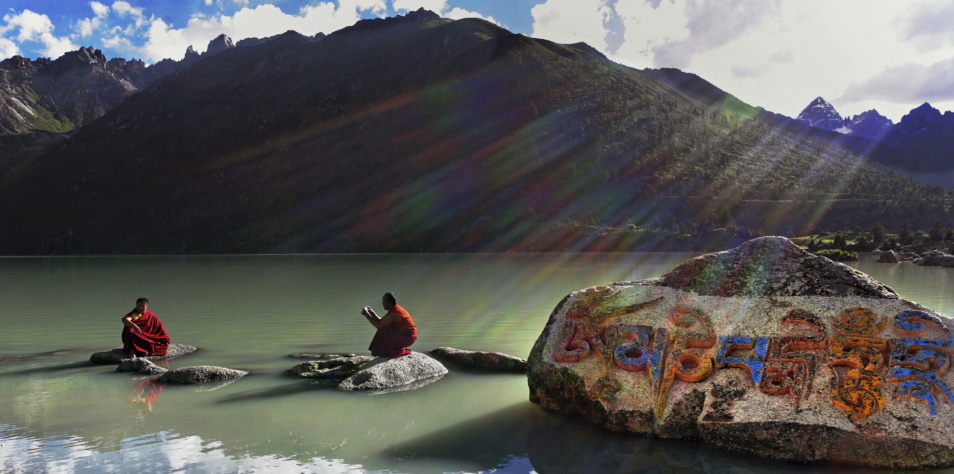#7 – May 2014 Newsletter
In this edition:
The Importance of Monastic Life
Summer Teaching Schedule for Khyentse Yangsi Rinpoche
Leadership and Management Workshop at Shechen
Shechen’s Spring Ceremonies: Drupchens and Tsechu Cham
Results of Latest Neuroscience Experiments at Shechen
News From Bhutan: Shechen Dharma Society
Translation of Rangjung Padma Nyingthik Ngondro into Nepali
Congratulations to Our Graduates
Other Links
The Importance of Monastic Life
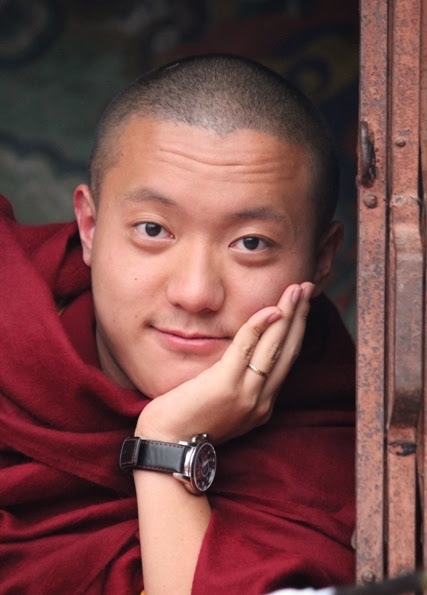 We asked Khyentse Yangsi Rinpoche to speak on the importance of monastic life:
We asked Khyentse Yangsi Rinpoche to speak on the importance of monastic life:
I consider monastic life as a way to offer and dedicate your life to practice and to help others in a real way. It is not like taking a job, or following rules, or just an experiment for fun, but it is a real responsibility that demands heartfelt work and motivation.
Monastic life has many levels or different responsibilities and activities. For instance, for the younger monks, monastic life is about studying, learning about Buddhism and the meaning of why they became monks. For elder monks, it is about practicing more intensively, meditating, trying to combine the meaning of life with that of monastic life, and re-examining the importance of the monastery.
For the most senior monks who study in the shedra, or philosophical college, it is more about learning all the traditions, the scriptures, the origin of Buddhism, its philosophy meaning of Buddhism, and so forth.
The main point of monastic life is to provide a way for you to offer your whole life to practice. Ordinarily, people don’t have time to practice. They have to juggle their job, bills, housing, looking after their family, and other mundane activities. They only have time to practice when they have a holiday or free time. It is very difficult for them. I know many people who really want to practice, but are always struggling to find the time. But life in a monastery is all about practicing. From the time you join the monastery until you leave or die, your whole life is about practicing, teaching people, helping people, serving the Buddhadharma. The real meaning of monastic life is to give yourself to the Buddhadharma and practice in the actual way you are supposed to.
Monastic life is not about becoming rich, or having good facilities in the monastery, or wearing fancy embroidered brocades, or using silver and gold cups and ornaments. That is just a personal interpretation of monastic life.
As I said before, a layperson can only practice at certain times as they have to give all their time to other responsibilities. A monk or nun has their whole life to practice, and that is the beauty of monastic life. But this is not simple; we face many challenges, many difficulties and problems. Why? The modern world is becoming more strong and convincing. Technology affects people’s minds, perception, and our whole environment. Everything is changing, becoming bigger and faster.
I feel like 21st century modern life is about how to promote your own personal priorities and needs. Everything is about what “I”, “you”, “me” “he”, “she,” wants. It is not about what “we” want or what “they” want. It is “me, me, me, me, me”. This has become the meaning of modern life.
So, fewer people want to become monks. The monasteries are losing their fully ordained monks. People who wear robes and look like monks – lamas, khenpos, tulkus – are losing their vows. Why? Because of facing the challenges of modernization, the challenges of technology and the surrounding environment.
This could actually be used as a great step for us. Why? Because if we are able to face the challenge, it proves that we have dedicated ourselves to practice. Not to show the world “we are practicing” or that “we are monks”, but to actually feel from our hearts that we are practitioners who are not wasting our time, not wasting our life for no reason.
Why do we work so hard to keep our monastery and its activities vibrant? We do so in order to keep the lineage of monastic life alive.
These are just my thoughts and I might be mistaken. If I am, I apologize, but if not, then this is a glimpse into what is the meaning of monastic life.
Summer Teaching Schedule for Khyentse Yangsi Rinpoche
Khyentse Yangsi Rinpoche has been invited to teach in a number of venues in Europe and North America this summer. Please see the schedule for dates and contact information.
Leadership and Management Workshop at Shechen
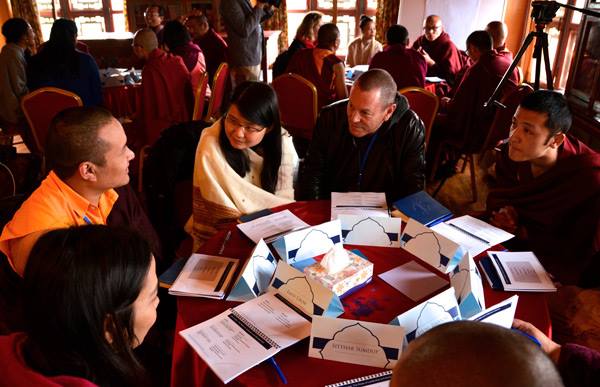 In February, Shechen Monastery co-hosted a workshop on “Excellence in Leadership and Management: Core Concepts and Best Practices.” This training workshop, sponsored by Dzongsar Khyentse Rinpoche and the Khyentse Foundation, was designed to help the current and future leaders who are responsible for disseminating the Buddhadharma effectively to systematically develop their leadership and management abilities.
In February, Shechen Monastery co-hosted a workshop on “Excellence in Leadership and Management: Core Concepts and Best Practices.” This training workshop, sponsored by Dzongsar Khyentse Rinpoche and the Khyentse Foundation, was designed to help the current and future leaders who are responsible for disseminating the Buddhadharma effectively to systematically develop their leadership and management abilities.
Tulkus, khenpos, monks, and lay-people met in the library at Shechen Monastery for 6 days of lively discussion and exploration. The elements of humour, fun, and collaboration created an atmosphere of support for participants to experiment with new ways of thinking.
Participants included Dilgo Khyentse Yangsi Rinpoche, Sakya Dungse Ratna Vajra Rinpoche, Dudjom Yangsi Rinpoche, and a number of other young leaders from Asia and the West. They all felt they had learned new methods of communication, confidence building, and leadership.
The workshop faculty presented talks and PowerPoint presentations, but the predominant form of learning was through experiential exercises designed to engage participants in real time activities and in guided discussion. Shechen looks forward to participating in more workshops of this kind in the future.
Shechen’s Spring Ceremonies: Drupchens and Tsechu Cham
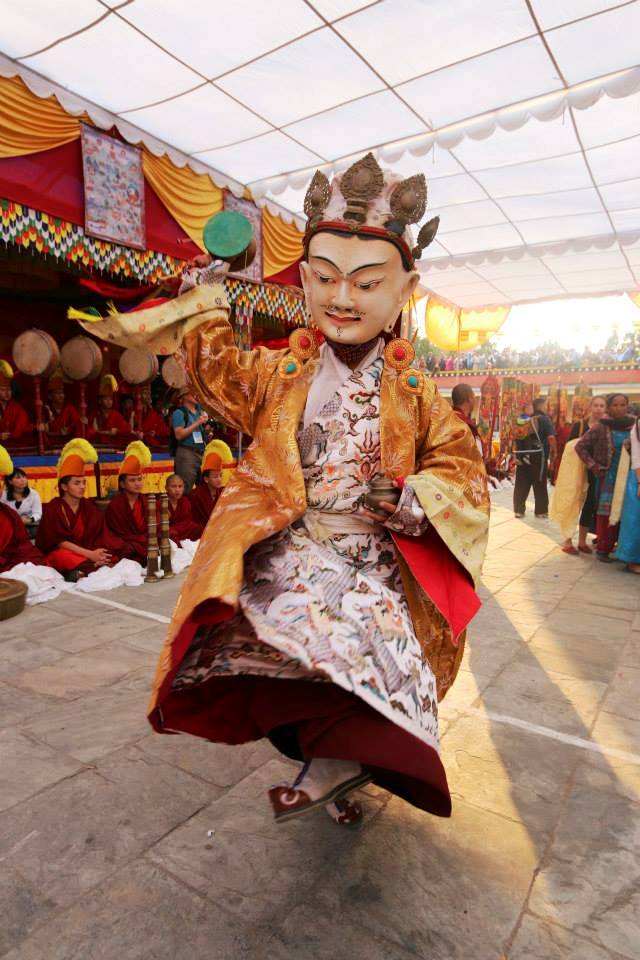 At the end and beginning of every Tibetan year, several nine-day ceremonies, called drupchens, are conducted at Shechen Monastery in Nepal. Monks and lay people practice together in the temple from dawn to dusk, and the monks continue the practice throughout the night so that the prayer and meditation are not interrupted. The beauty of the recited texts along with chanting and musical offerings from the horns, bells, drums and cymbals, help to free the mind from discursive thoughts and bring it to a contemplative state.
At the end and beginning of every Tibetan year, several nine-day ceremonies, called drupchens, are conducted at Shechen Monastery in Nepal. Monks and lay people practice together in the temple from dawn to dusk, and the monks continue the practice throughout the night so that the prayer and meditation are not interrupted. The beauty of the recited texts along with chanting and musical offerings from the horns, bells, drums and cymbals, help to free the mind from discursive thoughts and bring it to a contemplative state.
At the end of each drupchen the sand mandala that was created meticulously and specifically for that ritual is swept away as an indication of the impermanence of all things. The powders gathered up are thrown into a river so that all who use the water, animals or humans, are blessed.
The Tsechu Cham (monastic sacred dance) is the culmination of this intense five-week period of meditation. It is preceded by a three-day ceremony. The monks perform the sacred dances in the monastery courtyard as an expression of the joy that comes from pacifying the emotions. The public performance of these dances is their spiritual gift to the lay community.
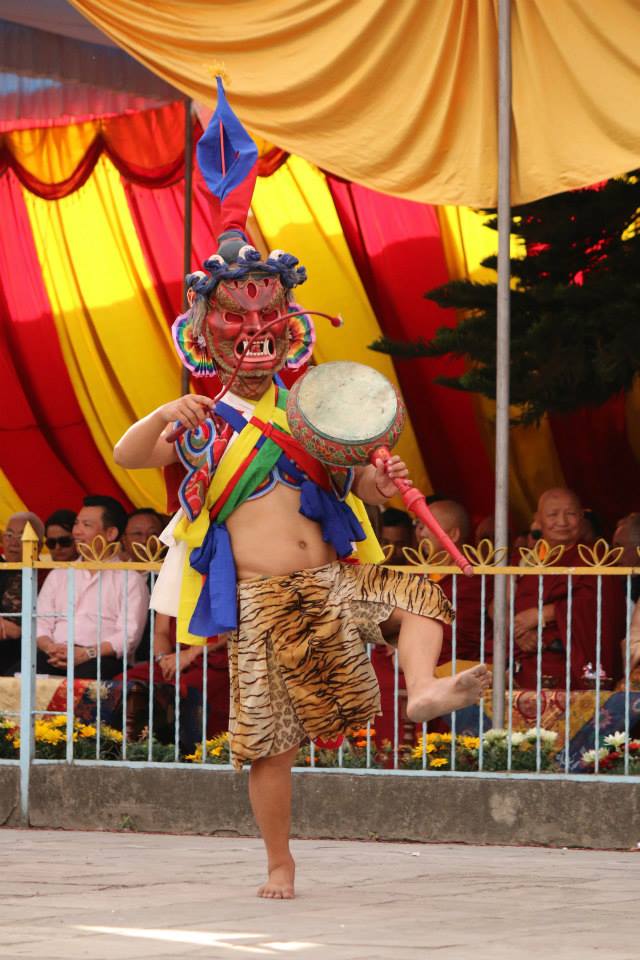 Sacred Dance opens a window into the heart of Tibetan culture. The vision it provides of the sacred world serves as a reminder of the extraordinary cultural heritage of Tibet. These dances, which originated in India and flourished for centuries in Tibet, are teaching stories. Every mask, costume, movement, and gesture has a specific significance and embodies the values of Buddhism. Shechen monks train for months for this special performance.
Sacred Dance opens a window into the heart of Tibetan culture. The vision it provides of the sacred world serves as a reminder of the extraordinary cultural heritage of Tibet. These dances, which originated in India and flourished for centuries in Tibet, are teaching stories. Every mask, costume, movement, and gesture has a specific significance and embodies the values of Buddhism. Shechen monks train for months for this special performance.
Each Spring we will present an article outlining various aspects of these profound ceremonies, so please keep linked in to hear more. We hope that in the future you will visit the monastery and attend these ceremonies and dances.
Results of Latest Neuroscience Experiments at Shechen
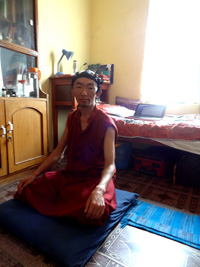 In the spring of 2013, the neuroscientist Maria Kozhevnikov visited Shechen Monastery to continue experiments done in previous years. In March 2014 Charlotte Davis interviewed Maria about her findings:
In the spring of 2013, the neuroscientist Maria Kozhevnikov visited Shechen Monastery to continue experiments done in previous years. In March 2014 Charlotte Davis interviewed Maria about her findings:
What brought you to Shechen Monastery initially to do this research?
My scientific interest in meditation started during the 2003 “Investigating the Mind” meeting. During the conference, there was a debate between the Buddhist scholars, including His Holiness the Dalai Lama, and neuroscientists concerning visual imagery. According to the Buddhist scholars, there are accomplished Buddhist practitioners who have developed exceptional imaging skills to the extent that they are able to maintain complex religious images in visual-spatial working memory for minutes, sometimes hours, without noticeable degradation. According to the psychological view on visual imagery maintaining an image for such a long time is impossible.
After the conference Matthieu Ricard helped me to arrange studies at Shechen with monks who practice Vajrayana style of meditation. My first two trips to Shechen were devoted to the topic of the exceptional visual imagery of Vajrayana practitioners. Five years later, I returned to Shechen with a different goal: to compare the neural correlates of Theravada and Vajrayana meditation and analyze the physiological and cognitive differences between the two.
What have you discovered from the research you have done?
An early scientific approach to meditation suggested that meditation could be considered as a relaxation response. Indeed, later research confirmed that meditation can be viewed as a metabolic state of parasympathetic dominance – a state of deep bodily rest – where the potential of mental alertness, specifically sustained attention or vigilance (so called tonic alertness) nevertheless remains. My suggestion was that one of the limitations of the previous research was its narrow focus on investigation of meditation techniques of Theravada tradition, while Vajrayana styles of meditation were largely ignored.
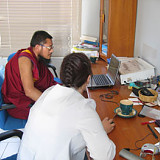 What were you testing this time in specific and what kind of results did you get?
What were you testing this time in specific and what kind of results did you get?
We conducted a comparative study to investigate physiological (heart rate, EKG) and electrophysiological (EEG) differences during different types of Theravada (shamatha and vipsasana) and Vajrayana (yidam and rigpa) styles of meditation. We tested Theravada practitioners in Thailand and Vajrayana practitioners at Shechen Monastery (Nepal).
There was no significant difference between the two types of Theravada style meditations (shamatha and vipassana), although shamatha has a tendency to bring about a more relaxed state. Similarly, there was no significant difference between the two types of Vajrayana meditations, yidam or rigpa, although rigpa showed a tendency to bring about an even more awake state than yidam practice, which I found somewhat surprising.
That’s very interesting, and I have mentioned your results to some of the teachers here who agree that the practice of Rigpa should also show a more highly “awake” state than that of visualization, and of course more so than Shamata/Vippassana which is more a practice to calm the mind.
 Yes, what the studies show is that physiological responses during Theravada style of meditation differ significantly from those during Vajrayana style of meditation. The most striking result was that Vajrayana did not show any evidence of parasympathetic activity (relaxation), but in opposite, it showed activation of sympathetic system, which usually happens during emotionally arousing events and accompanied by a dramatic boost in attentional capacities and wakefulness (called phasic alertness). Such dramatic boost in wakefulness is impossible during relaxation, and our results show that indeed Vajrayana styles of meditation rely on different physiological mechanisms than Theravada.
Yes, what the studies show is that physiological responses during Theravada style of meditation differ significantly from those during Vajrayana style of meditation. The most striking result was that Vajrayana did not show any evidence of parasympathetic activity (relaxation), but in opposite, it showed activation of sympathetic system, which usually happens during emotionally arousing events and accompanied by a dramatic boost in attentional capacities and wakefulness (called phasic alertness). Such dramatic boost in wakefulness is impossible during relaxation, and our results show that indeed Vajrayana styles of meditation rely on different physiological mechanisms than Theravada.
The practical implication of this study is that we should be aware that meditation of different traditions might bring about very different, if not opposite, states of body and mind, which may be applicable for different purposes. In general, Vajrayana builds on a state of high wakefulness, enhanced cognitive capacities (attention, perception), and stresses not relaxation, but clarity, lucidity, and wakefulness.
News From Bhutan: Shechen Dharma Society
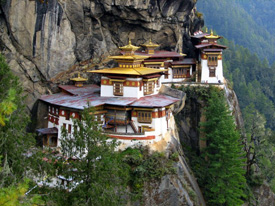 An “umbrella” organization for Shechen’s activities in Bhutan has recently been formed. The Shechen Dharma Society, a charitable organization, will oversee the activities of the Shechen Orgyen Chozong Nunnery, the Memorial Library, Satsam Chorten, and the various drupchens.
An “umbrella” organization for Shechen’s activities in Bhutan has recently been formed. The Shechen Dharma Society, a charitable organization, will oversee the activities of the Shechen Orgyen Chozong Nunnery, the Memorial Library, Satsam Chorten, and the various drupchens.
The board members include Gyalse Tulku (president), Khenpo Rigzin Samdrup (vice-president), Ani Tsering Yangdon (general secretary), Tshering Tenphel (ass’t general secretary) and Tenzin Wangchuk (ATA) (treasurer). The main office is in Thimphu.
Translation of Rangjung Padma Nyingthik Ngondro into Nepali
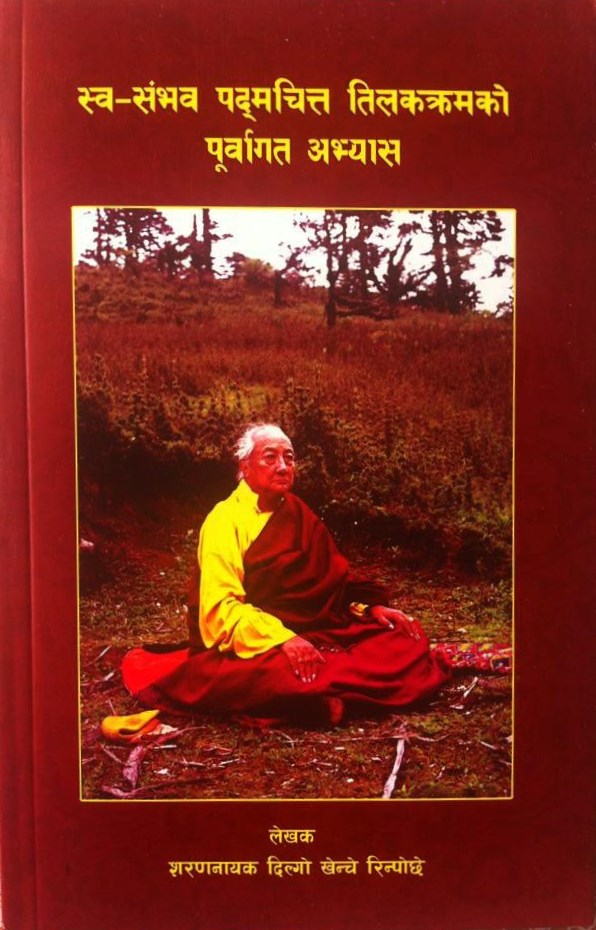 The preliminary practice (ngondro) from the Rangjung Padma Nyingthik, a terma cycle of Dilgo Khyentse Rinpoche, has been translated into Nepali and is now available through Shechen Publications. The book was officially launched in February on the anniversary of Longchen Rabjampa in the main Shechen temple, presided over by Dilgo Khyentse Yangsi Rinpoche, Dzongsar Khyentse Rinpoche, Dudjom Yangsi Rinpoche and other eminent Rinpoches, khenpos, and teachers.
The preliminary practice (ngondro) from the Rangjung Padma Nyingthik, a terma cycle of Dilgo Khyentse Rinpoche, has been translated into Nepali and is now available through Shechen Publications. The book was officially launched in February on the anniversary of Longchen Rabjampa in the main Shechen temple, presided over by Dilgo Khyentse Yangsi Rinpoche, Dzongsar Khyentse Rinpoche, Dudjom Yangsi Rinpoche and other eminent Rinpoches, khenpos, and teachers.
The text was translated by the renowned writer Punya Prasad Prajuli who has translated other works for Shechen Monastery in the past. The translation of the entire Rangjung Pema Nyingthik cycle practices and commentaries are planned for the future.
Khenpo Sangay Phuntsok, president of SMV and organizer of the project, explained that this project was initiated to help the many Nepali students who want to practice the termas of Dilgo Khyentse Rinpoche. This cycle will be introduced in Nepal through a series of empowerments and teachings.
Congratulations to Our Graduates
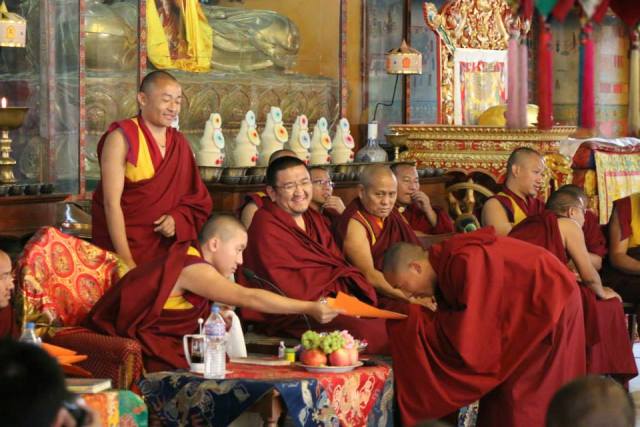 Shechen Monastery congratulates the graduates of its Shedra, Art School, and Elementary School. Thirteen students graduated from the Shechen Shedra (Philosophical College) and received the lopon degree. Eight graduates from the Shechen Elementary School will now join the Drasang. Six students graduated from the Tsering Art School including two Shechen Monks, who will now join the school’s Rabsel Thangka Studio. In Bhutan, three nuns will graduate from the Shedra course (see next newsletter).
Shechen Monastery congratulates the graduates of its Shedra, Art School, and Elementary School. Thirteen students graduated from the Shechen Shedra (Philosophical College) and received the lopon degree. Eight graduates from the Shechen Elementary School will now join the Drasang. Six students graduated from the Tsering Art School including two Shechen Monks, who will now join the school’s Rabsel Thangka Studio. In Bhutan, three nuns will graduate from the Shedra course (see next newsletter).
Ngawang Zangpo was conferred the title of a Lama during an enthronement ceremony in April. He was among the first group of monks to complete a three year retreat at Shechen’s retreat center at Namo Buddha, after which he has dedicated many years of service running the retreat center for the monastery.
A new monastery position was created and given to the recently graduated lopon, Tsering Raul. He will be the “Environment Officer” and look after the grounds, eco group, and earthquake readiness activity.
Other Links
For continuing news please regularly visit our website where you can sponsor a monk or nun, donate to one of our projects, request prayers and find new information and photos. Current photos and news can also be found on our Facebook page.
